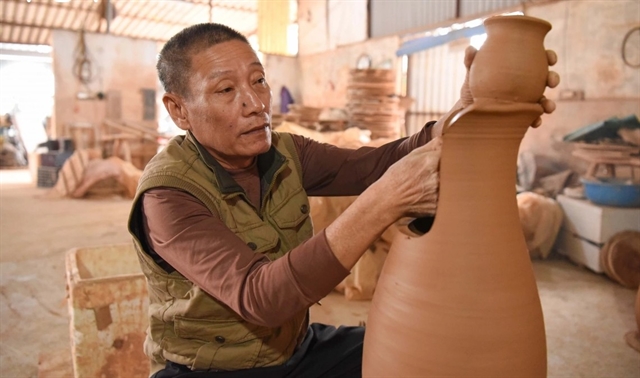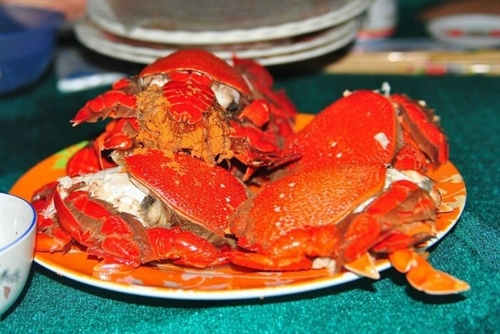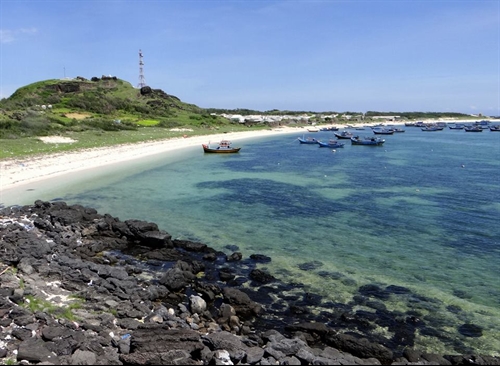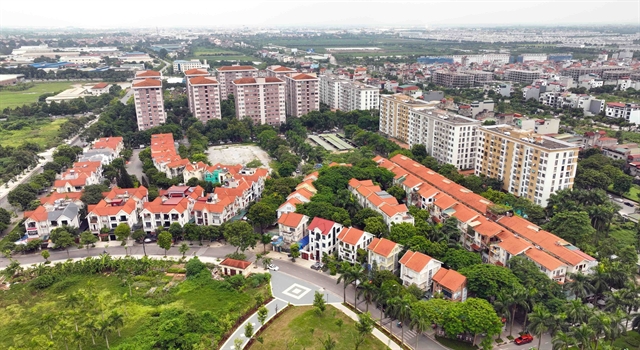 Life & Style
Life & Style

Phú Quý is a beautiful and peaceful small island with so much potential for travelling and leisure activities. This tourist site is getting increasing attention from both the domestic and foreign travelling community.
 |
| Big boned: The "museum" of whales at Vạn An Thạnh is a religious and architectural cultural site. -- Photo cinet.vn |
by An Vũ
Phú Quý Island is as dazzling and sparkling as its name, which in Vietnamese means wealth and honour. It is one of the many rising stars among the islands of Việt Nam.
"Phú Quý Island is not only a tourist attraction, but also a place of kind-hearted people," my traveller buddy Neo Trần stressed on his short trip to the south-central coast province of Phan Thiết.
Showing off his sunburned skin from the trip, Trần told me that sunshine, wind and sand are the island’s most precious treasures.
Although just a tiny island situated 120km away from Phan Thiết City, Phú Quý is becoming more popular than ever on tourist’s hot list, because of its primitive and untouched tourist attractions.
Before setting foot on the island, I only thought of Phú Quý as another version of the Cô Tô Archipelago in the northern province of Quảng Ninh.
However, Phú Quý has much more to offer than meets the eye.
Tourists have learned about Phú Quý only over the last two years, due to the problems they faced while moving around the island. The number of travellers remain at a certain number, and are mostly backpackers. As the beach was deserted, I found myself bathing in crystal clear blue water and screaming, with no fear that anyone could hear me.
With an area of 16.4km2, there is no better way to discover the island than taking a motorcycle ride. On the first morning, we rented a motorcycle at the reasonable price of VNĐ120,000 (US$5) to discover the whole island. To our surprise, though many tourist sites are becoming increasingly polluted day-by-day, the citizens here are very conscious about keeping the environment clean.
At present, on many of the island’s paths you will find foreign visitors carrying their water-skiing gear. This no longer surprises the local citizens. Trần Quỳnh Trang, owner of the Phương Mai Hostel said, “They stay on the island for at least four days, or sometimes even a month. Mostly, they are swept away by the game of waves every day.”
Above all, the seafood is something that cannot be ignored, especially as Phú Quý is home to the Huỳnh Đế crab.
A long time ago, the crab was the dish of emperors due to its rarity and nutritive value. Nowadays, we only spent 400,000 đồng ($18) to have a full tasty dish.
There are not too many tourist destinations where you are as warmly welcomed as you are at Phú Quý. People share a laugh and make things cosy for tourists. While asking for directions, I was invited by an inhabitant to enter her home and share a cup of tea. Such warm manners!
The next afternoon, we paddled around the smaller islands surrounding Phú Quý, such as Hòn Tranh, Hòn Đen, and Hòn Trứng, on a rented boat (US$17-18). We were able to look straight down to the seabed, where large and small rocks overlapped each other like a stairway to heaven.
The island of records
Overall, the most memorable part of the whole journey, for me, was being able to view one of the biggest whale bones in the nation that is displayed there.
There are almost 30 cultural artifacts and sites at Phú Quý representing a number of different beliefs. The most distinguished place is Vạn An Thạnh at Triều Dương Hamlet, Tam Thanh Commune, built in 1781, which is called the "museum" of whales.
Legend has it that the whale (cá Ông), when she was alive, saved the lives of many fishermen and helped boats in distress. Many of the fishermen are still alive today, and locals pay their profound respects to her. Therefore, when the whale died and washed ashore, the villagers organised a burial for her. The whale welcoming festival is held every year, and the 20m bone is shown at an exhibition centre called Ông Hải Nam in Vạn An Thạnh.
Bigger and better, alongside the whale bone, tourists can also watch the giant wind turbines and sea lights situated on the other side of the Linh Sơn Pagoda and the Cao Cát Mountain peaks.
As night fell, we took a stroll along the beach. I remembered someone saying, “No one ever visits an island and returns to the mainland without watching the sunset.” People make plans to catch the sunset on the beach. I arrived on the island without any such plan, however, I could not help but gaze at this glorious scenery at dusk.
One can find many such places to watch the sunset on the island. There is the Ngũ Phụng stone embankment, the Thầy Nại Palace, and the Triều Dương Bay. But for me, the best site was the mountain peak of the Linh Sơn Pagoda. From here, when the sun set, the shades of light and dark orange created a spectacular view.
Tạ Minh Nhật, chairman of the Phú Quý People’s Committee, said that since 2014, the tourist numbers to the island have seen a significant rise. “Since electricity became available all day in 2014, the number of foreigners to the island and the economy has developed immensely.”
Looking back, the moments I spent at Phú Quý made me fall in love with the island even more. – VNS
 |
| Royal: Phú Quý is home to the rare and nutritious Huỳnh Đế crab, once chosen as a dish for emperors. -- Photo kenhdulich.org |
 |
| Tranquil: Phú Quý Island is one of the many rising stars among the islands of Việt Nam. -- Photo www.ivivu.com |









